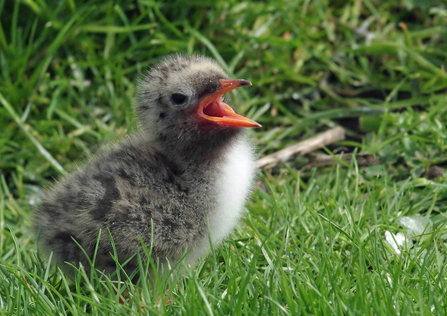
Photo by Gillian Day
Is it hurt or in danger?
If you see a baby bird in a vulnerable position, you can move it to safe, sheltered spot nearby e.g under a hedge or onto a low branch if it is a fledging or back into its nest if it is a nestling. If it is in your garden, keep pets like cats and dogs indoors if possible, and if you are concerned about other garden visitors, you can keep a watch out from your window. If it is obviously hurt, you may try to catch it and contact a local wildlife rescue organisation or vet. The younger it is and the fewer feathers it has, the sooner it will need expert attention. Birds bitten by cats are at risk of septicemia (blood poisoning) and will die without swift antibiotic treatment within the first few hours. Contact a vet as soon as possible.
Can you see parents nearby?
If you return a nestling to its nest, the parents should return to it within an hour. Get in touch with a local wildlife rescue organisation or vet if there is no sign of the parents, and do not try to hand rear a chick yourself.
Handling and care
Baby birds should be handled very gently and will usually be more comfortable with their wings held against their bodies, feet supported. If possible, prepare the following before you attempt to rescue the bird:
• Prepare a container for the bird before catching it if possible - something like an ice cream tub or shoebox lined with tissues will usually be ok
• Remember to provide air holes if you need to cover the box
• Put the bird somewhere quiet and warm - a nestling should be warm to the touch, but not hot or panting
• Prepare a water bottle wrapped in a towel as a source of heat placed next to, under or inside the box, with space for the bird to move away if it wants to
• Do not offer food or water, or try to hand rear the bird unless you have been direct instructed to do so by an expert. They have very specialised diets and it is very easy to drown a bird by trying to give it water.
What to do next
If you are unsure about what to do, or are unable to get the casualty specialist care within an hour, speak to an animal welfare organisation like the RSPCA for advice. Wildlife rescue services usually can’t offer pick up, so you will likely need to transport the bird yourself. Make sure you wash your hands well after handling any animal!
